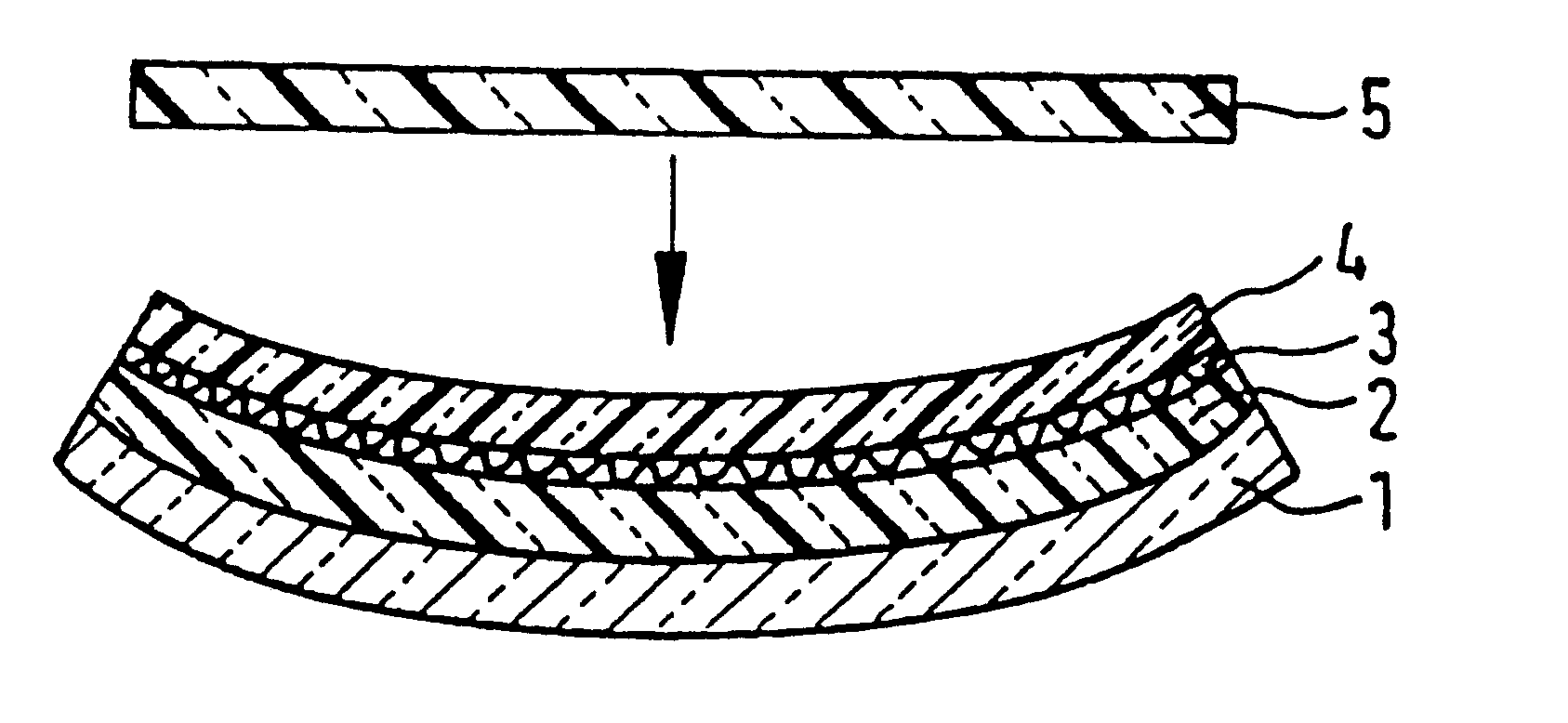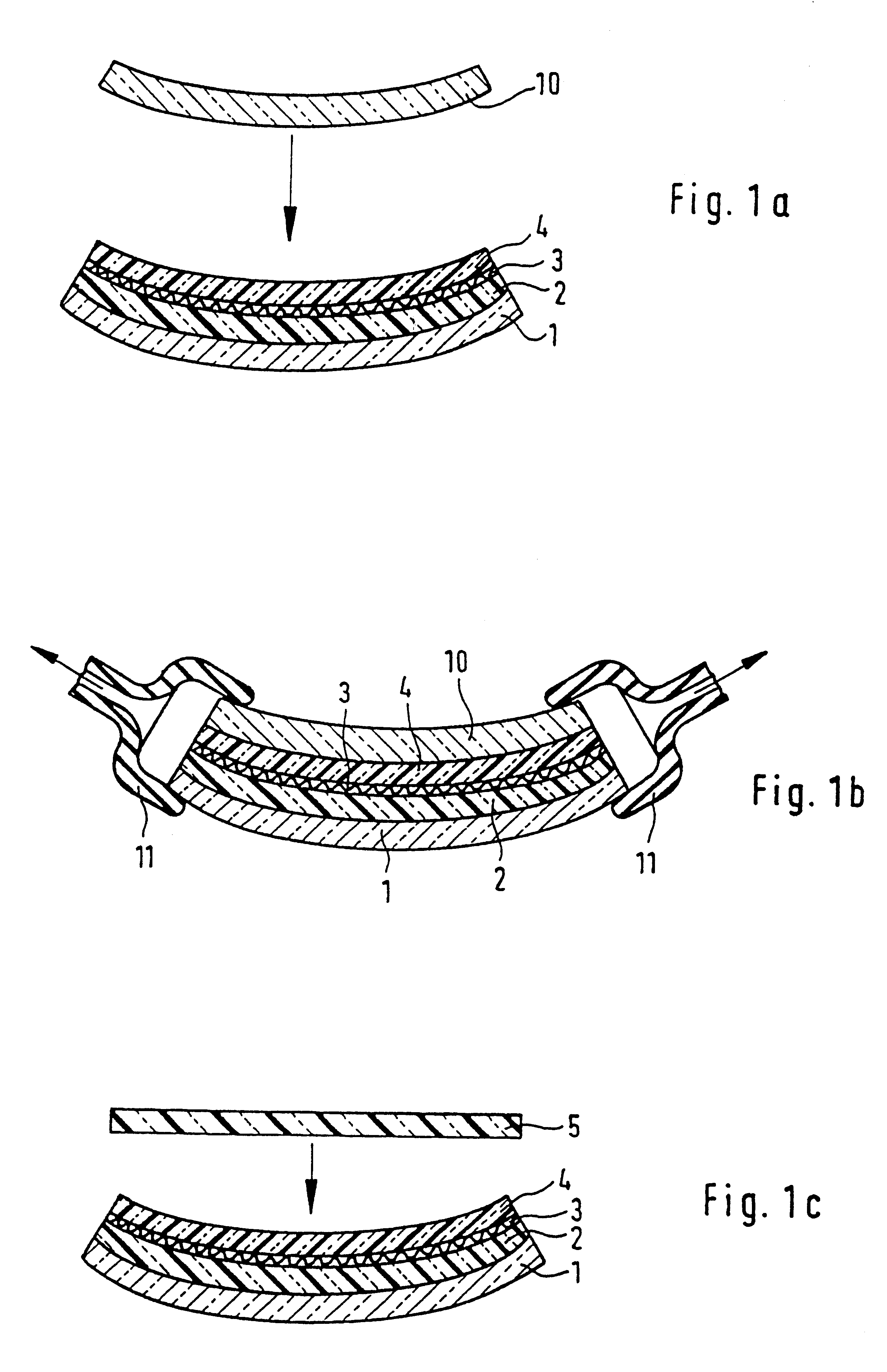Process for producing a curved laminated safety glass sheet
a technology of safety glass and fabrication process, which is applied in the direction of coatings, layered products, chemistry apparatus and processes, etc., can solve the problems of glass sheet deviation, high processing cost, bond defects between glass sheet and foil prelaminate,
- Summary
- Abstract
- Description
- Claims
- Application Information
AI Technical Summary
Benefits of technology
Problems solved by technology
Method used
Image
Examples
example 2
Corresponding to Example 1, initially a foil prelaminate was fabricated from a 0.38 mm thick PVB bonding foil 2 embossed on both sides and a PET carrier foil 4 having a high light permeability solar control coating as a thin layer system.
The foil prelaminate was deposited with its bonding foil side fold free on the concave side of a complexly bent first glass sheet 2 having a thickness of 2.1 mm and fixed on a horizontal support (process step (a)). The first glass layer 1 had the same dimensions of that of Example 1 and was bent both in the longitudinal direction and in the transverse direction. Its height in the longitudinal direction like that of Example 1 was about 10 cm while its transverse bend amounted to 15 mm. The foil prelaminate was provided along its edge with a 25 mm wide printed and baked-on opaque masking sight protective strip (not shown). Different from Example 1, together with the foil prelaminate an about 25 .mu.m thick uncoated PET separating foil 6 was laid down ...
PUM
| Property | Measurement | Unit |
|---|---|---|
| heat shrinkage capacity | aaaaa | aaaaa |
| heat shrinkage capacity | aaaaa | aaaaa |
| pressure | aaaaa | aaaaa |
Abstract
Description
Claims
Application Information
 Login to View More
Login to View More - R&D
- Intellectual Property
- Life Sciences
- Materials
- Tech Scout
- Unparalleled Data Quality
- Higher Quality Content
- 60% Fewer Hallucinations
Browse by: Latest US Patents, China's latest patents, Technical Efficacy Thesaurus, Application Domain, Technology Topic, Popular Technical Reports.
© 2025 PatSnap. All rights reserved.Legal|Privacy policy|Modern Slavery Act Transparency Statement|Sitemap|About US| Contact US: help@patsnap.com



